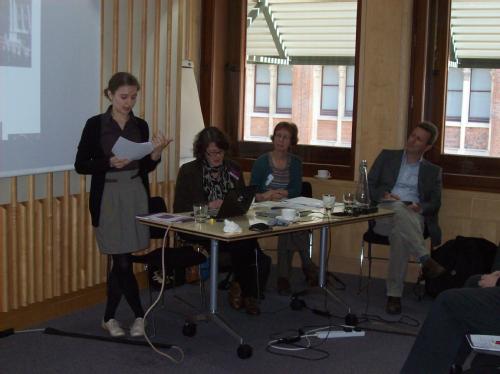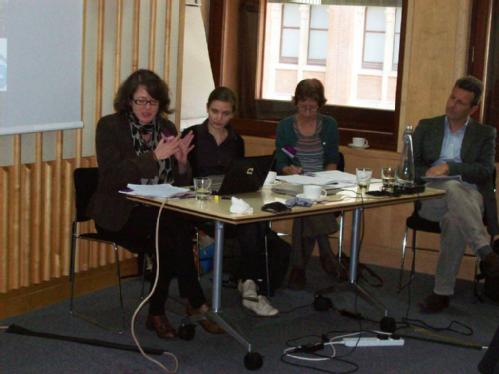Panel 3 – Political Institutions and the Symbolic
Dr Rachel E. JohnsonTitle: Pageantry as Politics: the State Opening of ParliamentsCo-authored Dr Faith Armitage and Dr Carole SparyAbstractThrough a comparative study of three parliamentary opening ceremonies this paper argues that political ceremony plays a vital role in making the meanings of modern politics. The annual ceremonial sitting of the UK, Indian and South African parliaments known as the State Opening of Parliament, the President’s Address and the State of the Nation Address respectively, are examined for what they can reveal about how such ceremonies constitute parliamentary politics. The comparative study of the ceremonies shows that such occasions do not serve any one function within parliamentary democracies and nor can they be easily dismissed as simple reflections of national or institutional culture. Rather the ceremonies are dynamic sites of contestation and incorporation. Through media coverage, interviews and participant observation the paper explores in detail the ceremonial tradition in each country as it was performed in 2010 in the UK and South Africa and in 2009 in India. Whilst the basic structure of the three ceremonies is the same, the performances vary in their intentions and importance in the symbolic political lives of the three nations. The analysis focuses on four points of comparison: constitutional organisation, participation, narrative and subversion.
|
|
Prof Georgina WaylenTitle: Building New Democracies: Symbols and SpaceAbstractInstitutional design and the construction of the architecture of a new democracy has long been recognised as an important part of creating stability in new democracies, particularly if the transition has occurred in the context of longstanding conflict or division. Parliaments and their buildings – whether it is the UK Houses of Parliament in Westminster with its iconic silhouette of Big Ben or the US Congress - have long been seen as powerful symbols of democracy. They obviously play an important role in any democratic polity, including new ones – frequently serving as symbols of legitimacy, choice, representation, and inclusion – concepts associated with most variants of democracy. And in some transitions, making the new parliaments effective symbols of a new inclusive democracy has involved significant efforts to ensure that parliamentary buildings and space are seen as more open to all. This paper analyses some of these efforts and asks what the analysis of parliamentary buildings and space can tell us about a transition to democracy. It examines three cases – South Africa, Northern Ireland and Germany - where an existing parliamentary building was used as the legislature for the new democracy. In all three cases the parliamentary building already had high symbolic value as a result of the fraught and divisive political history that preceded the creation of the new democracy. And in each case the decision to use the pre-existing building - the Reichstag in Germany, Stormont in Northern Ireland and the Cape Town parliament in South Africa - was also accompanied by a programme to refashion the building, its content and symbolic meaning as part of the transition. The paper examines what forms these efforts took, asking how effective they were, either in terms of how parliament was seen or in helping to fashion democratic stability. Or whether the efforts were actually a way of covering up a lack of fundamental change. It concludes that this symbolic aspect of constructing the architecture of new democracies has been undervalued by political scientists to date and can make a contribution to increasing inclusion and democratic legitimacy.
|
|
Prof Philip ManowTitle: Cupola, Rostrum, Parliamentary Seating Arrangements—Democracy’s New Architectural LanguageAbstractThe paper looks at three architectural elements of modern parliaments, at their symbolical meaning and how they developed out of older forms in the transition from monarchy to democracy – 1) the cupola and glass ceiling of modern parliaments, 2) the substitution of the throne by the rostrum and the president’s or speaker’s seat in modern parliaments, and finally, 3) the dominant seating arrangement of modern parliaments, the hemicycle.
As relevant publication please refer to: Philip Manow, 2010: In the King's Shadow. The Political Anatomy of Democratic Representation. Oxford: Polity.
|
|


